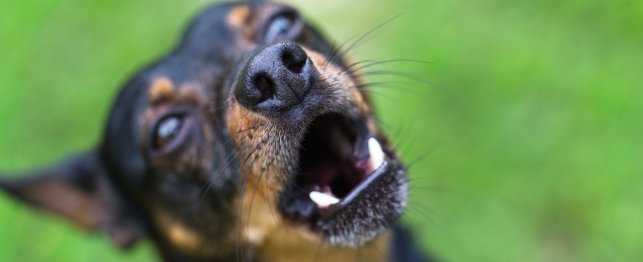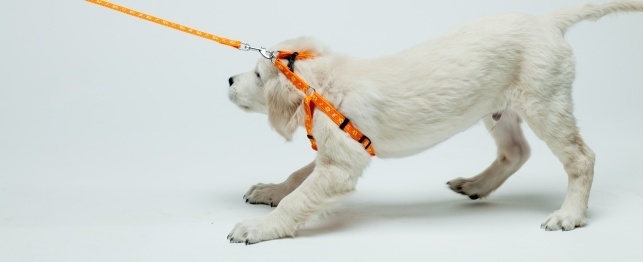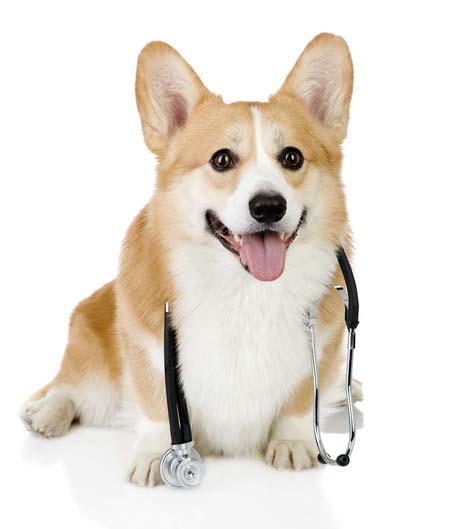You may have been considering trying one of the new grain free dog foods on the market. Many people have done so, and reported improvements in the health of their pets. Problems with digestive issues and allergies have been alleviated. Older and obese dogs do better on a grain free dog food diet.
Canines are carnivorous, and their enzymatic and digestive systems thrive on protein. Grain-based products are very hard for a dog's system to break down and process. Rice, corn, millet, wheat and rye are all found in traditional kibble recipes. The canine intestine suffers inflammation in response to the ingestion of these carbohydrates, resulting in the production of histamines and allergic responses. A dog who has been on a high-grain diet will frequently get sick when given meat. This is not because the dog cannot digest meat, but rather the dog's body no longer produces sufficient enzymes to process a concentrated amount of proteins.
In the past, dogs ate the same foods as the rest of the family. They ate vegetables, potatoes and meat. Any rice or bread was at a minimum, and not fed regularly. Kibble was invented about sixty years ago as there was perceived to be a market for convenient, ready to serve dog food. Designing products that had a high percentage of fillers allowed the manufacturers to offer an inexpensive product, while making a good profit.
As competition for the share in this market increased, producers continued to look for ways to make kibble less expensive while retaining healthy profits. The amount of protein in the foods was lowered until over 80% of the ingredients were grains and filler based.
There are a number of allergic reactions to grain dominated foods. The most obvious are diarrhea, gas and loose stools. Skin irritations are another. Many people think their dog has fleas, but chances are this is not the case. A skin-related allergic reaction can make your dog miserable. If your dog is biting at his toes and feet, or around his anus, it is probably a food allergy.
A kibble free of grains will usually have potatoes and sweet potatoes in the ingredients. Spinach, peas, pumpkin, squash, turnip greens, and carrots are popular vegetables found in these foods. Apples, pears, blackberries, and blueberries are also popular additions. The percentage of protein is increased as well.
There is also a variety of meat sources offered in this type of food. There are red meat products containing beef, lamb or bison. Chicken and turkey are offered in poultry based foods. Salmon, whitefish, herring, and pike are some of the ingredients in the fish formulas. Severely allergic dogs may require a single source protein product.
Changing the dog's diet should be done gradually. Slowly add the new product to his old food over a few days. This will allow his system to adapt to the digestive demands of the new diet. An abrupt changeover can be very hard on a dog's digestive system.
You should see improvements in your dog's health and well being within a few weeks. If there are still some minor problems, consider trying a different protein source. You should also think about adding raw meat to his daily food. The closer you can make your dog's diet that of a carnivore, the healthier he will be.

 Does Olive Oil Make Your Dog's Hair Shiny?
Does Olive Oil Make Your Dog's Hair Shiny
Does Olive Oil Make Your Dog's Hair Shiny?
Does Olive Oil Make Your Dog's Hair Shiny
 Bite Guard: Preventing Dog Attacks and Bites
Bite Guard: Preventing Dog Attacks and Bites
Bite Guard: Preventing Dog Attacks and Bites
Bite Guard: Preventing Dog Attacks and Bites
 When Is it Safe to Let Your Puppy Go Outside and Meet Other Dogs?
When Is it Safe to Let Your Puppy Go Outside
When Is it Safe to Let Your Puppy Go Outside and Meet Other Dogs?
When Is it Safe to Let Your Puppy Go Outside
 Dog Licking Paws: Natural Remedies
Raw paws are often the red flags of
Dog Licking Paws: Natural Remedies
Raw paws are often the red flags of
 Making a Positive Impression
As breeders, owners, and enthusiast
Making a Positive Impression
As breeders, owners, and enthusiast